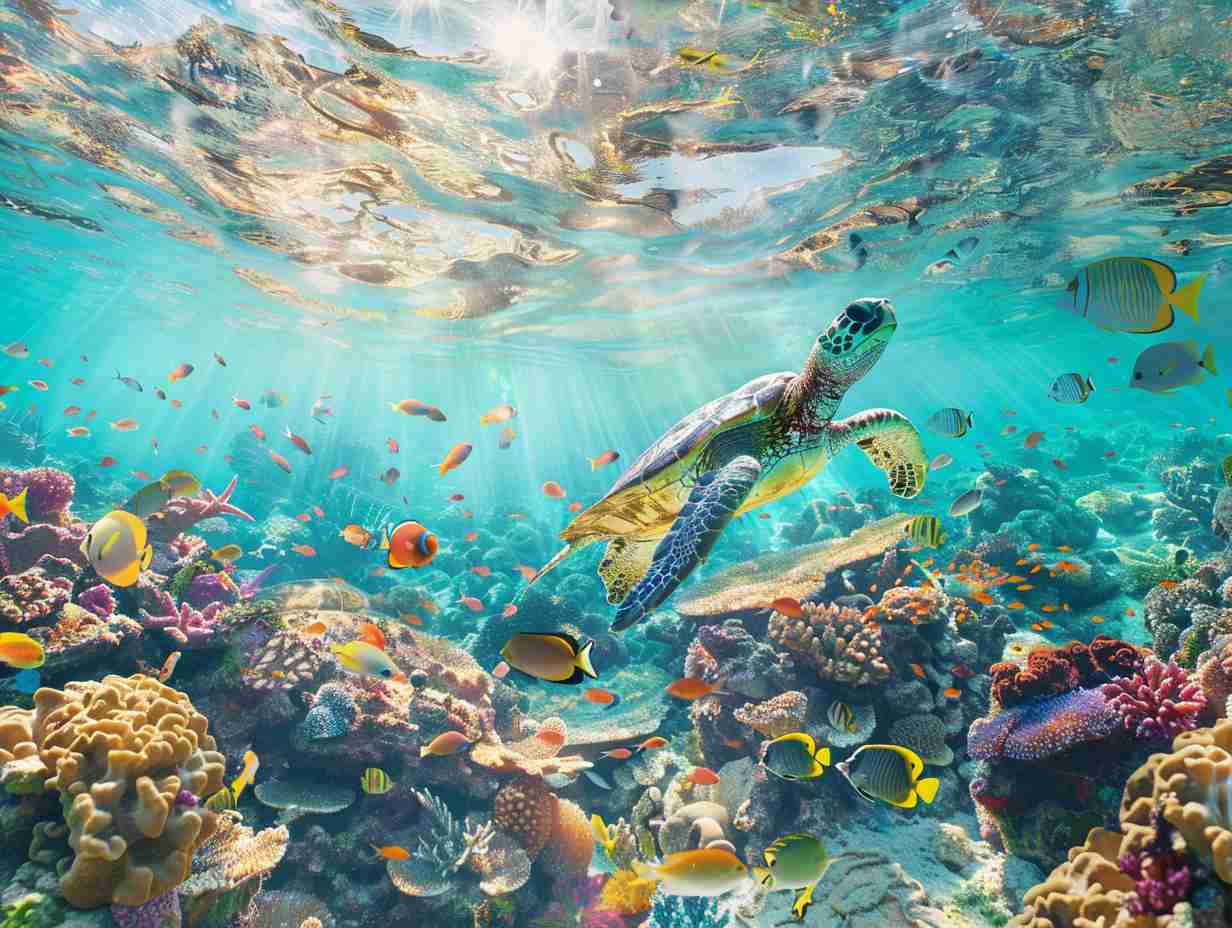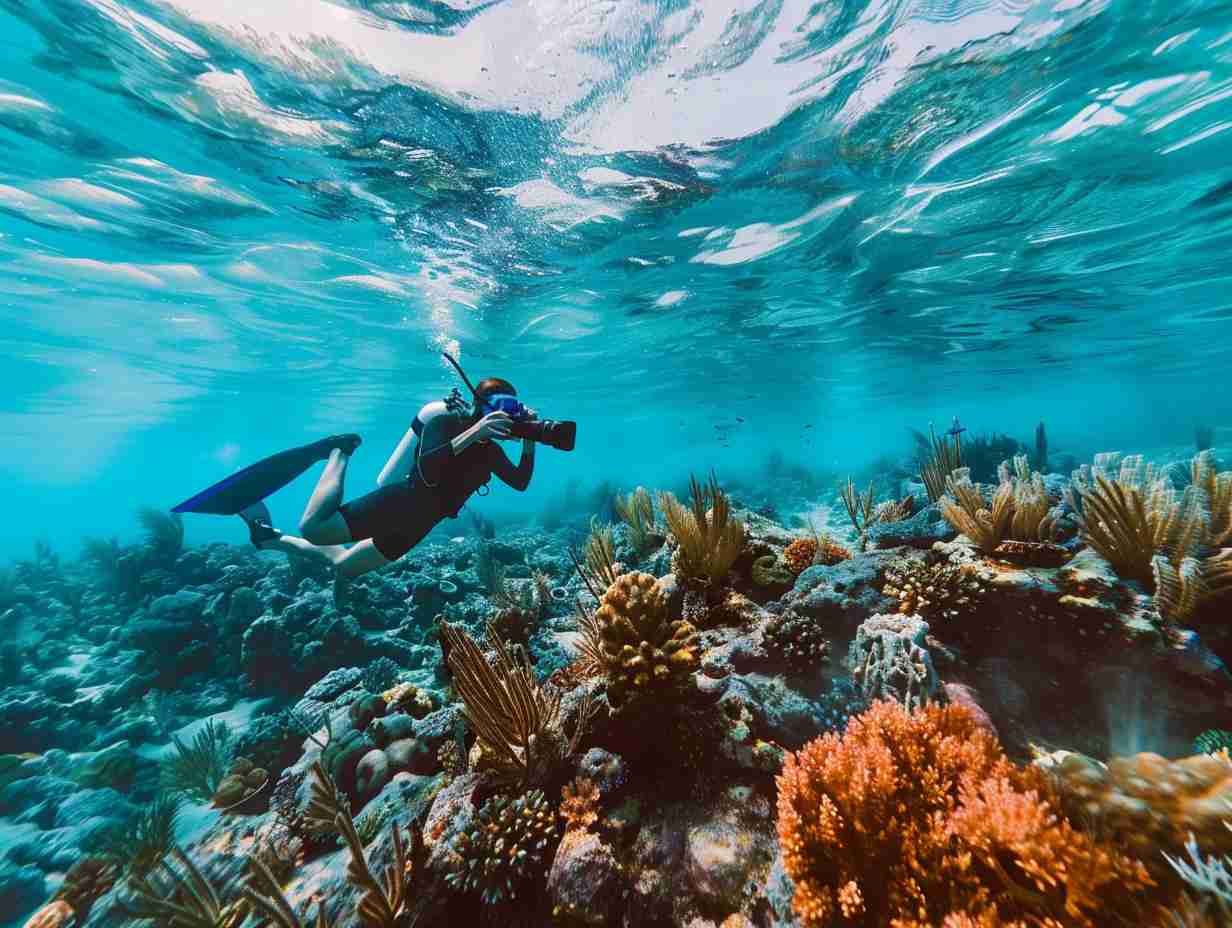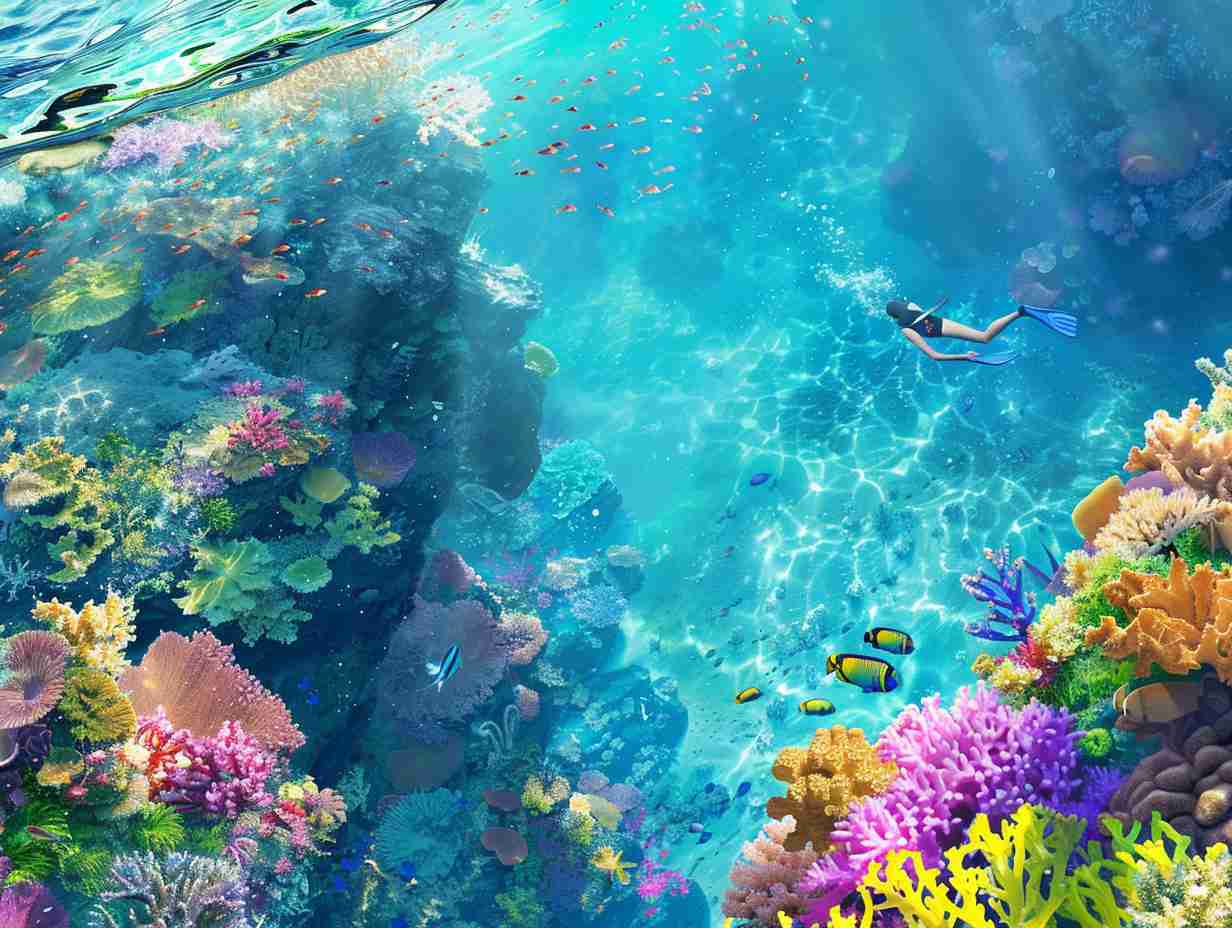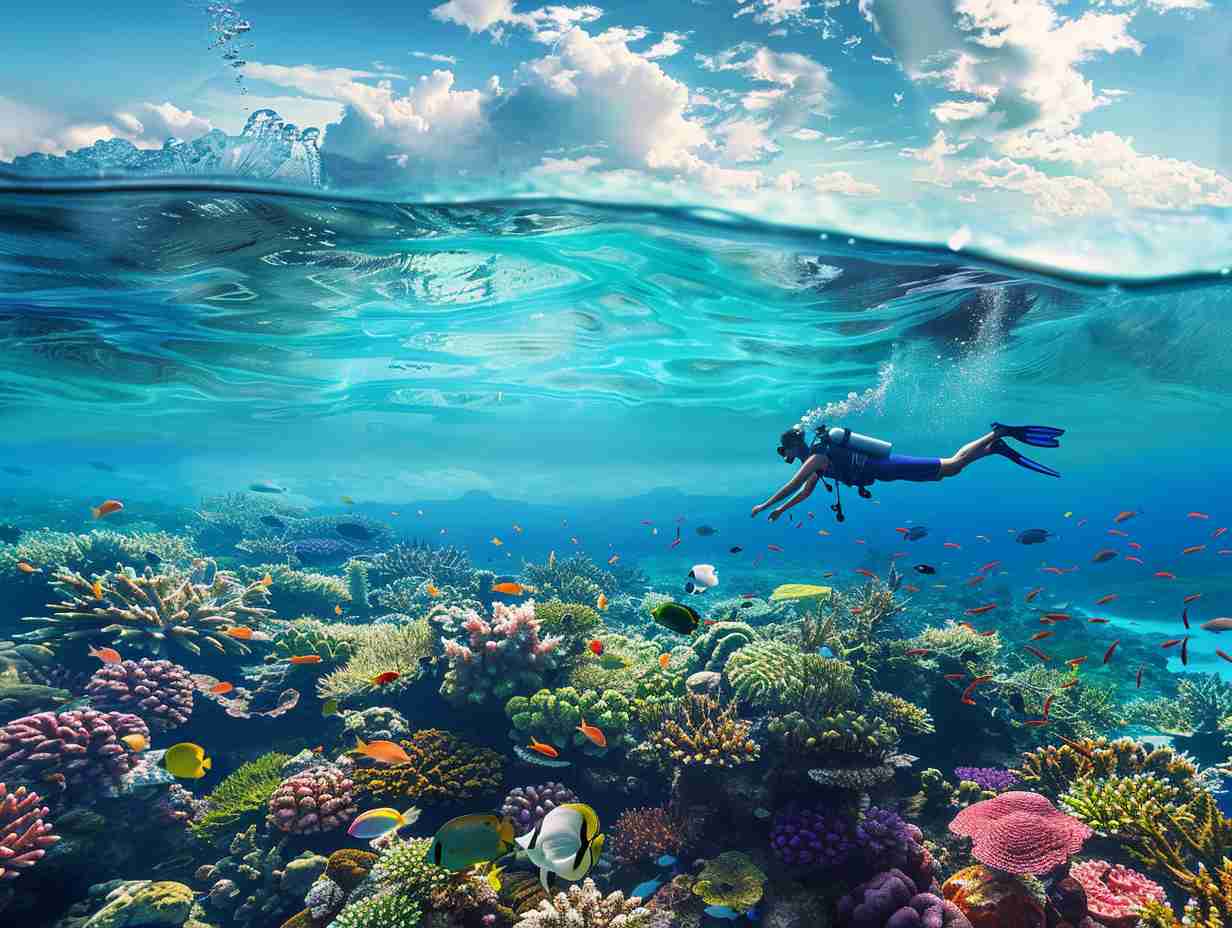
Underwater Photography for Snorkelers
Table Of Contents

Capture enchanting underwater moments with your snorkeling adventures by diving into the world of underwater photography. From colorful coral reefs to curious marine life, the possibilities are endless.
But how can you guarantee your photos truly do justice to the mesmerizing underwater world you explore? Let’s explore the essential equipment, lighting techniques, composition tips, editing tools, and ethical considerations that will take your underwater snapshots to the next level.
Discover how to elevate your underwater photography skills and create stunning images that will leave a lasting impression.
Key Takeaways
- Choose a waterproof camera with underwater shooting modes.
- Use artificial or natural light strategically for stunning shots.
- Focus on composition techniques like rule of thirds and leading lines.
- Edit your underwater photos with specialized software for optimal results.
Essential Equipment for Underwater Photography
When diving into underwater photography, your essential equipment consists of a reliable waterproof camera and a sturdy housing. These two items are vital to protect your camera from water damage and guarantee high-quality shots.
Look for a camera that offers good image quality, easy-to-use controls, and underwater shooting modes. A sturdy housing is essential to keep your camera safe and secure while diving. Additionally, consider investing in a wrist strap or floatation device to prevent accidental drops.
Remember to check the depth rating of your equipment to make sure it can withstand the underwater conditions you’ll be shooting in. With the right gear, you’ll be ready to capture stunning underwater shots during your snorkeling adventures.
Lighting Techniques for Stunning Underwater Shots
To achieve stunning underwater shots, mastering effective lighting techniques is essential for enhancing the clarity and vibrancy of your photographs. Proper lighting can make a significant difference in the quality of your underwater images.
Here are some key lighting techniques to take into account:
- Use a strobe or flash: Bring artificial light to illuminate your subject.
- Adjust white balance: Correct color distortions caused by water depth.
- Position yourself strategically: Take into account the angle of the natural light source.
- Avoid backlighting: Prevent shadows and loss of detail in your photos.
- Experiment with different light intensities: Play with light to create depth and dimension in your underwater shots.
Composition Tips for Captivating Underwater Images

Enhance the impact of your underwater photographs by applying effective composition techniques that draw viewers into the mesmerizing world beneath the surface.
Start by focusing on the rule of thirds; position your main subject off-center to create a more dynamic and visually appealing image.
Incorporate leading lines such as coral reefs, fish schools, or rock formations to guide the viewer’s eye through the photo.
Experiment with different angles and perspectives to add depth and interest to your shots.
Utilize negative space to emphasize the beauty and vastness of the underwater environment.
Remember to maintain a balance between the foreground and background elements to avoid cluttered compositions.
Editing Tools and Software for Underwater Photos
Discover essential editing tools and software that can elevate the quality of your underwater photos and enhance their visual appeal. When it comes to editing underwater photos, having the right tools can make a significant difference in the final outcome. Here are some recommended editing tools and software to help you enhance your underwater images:
-
Adobe Lightroom: Perfect for adjusting colors, tones, and enhancing details.
-
Photoshop: Ideal for more advanced editing techniques and creative effects.
-
Capture One: Great for color correction and improving overall image quality.
-
Luminar: Offers a variety of presets and AI-powered editing tools for quick enhancements.
-
Topaz Studio: Known for its powerful AI-based noise reduction and sharpening tools.
Best Practices for Underwater Photography Ethics

When engaging in underwater photography, it’s important to adhere to ethical practices to respect the marine environment and its inhabitants. Always maintain a safe distance from marine life to avoid causing distress or harm.
Refrain from touching or manipulating any creatures or coral as this can disrupt their natural behavior and habitat. Be mindful of your impact on the environment by not stirring up sediment or damaging delicate ecosystems.
Use only reef-safe sunscreen to prevent harmful chemicals from entering the water. Remember that you’re a guest in the underwater world, so treat it with care and consideration.
Frequently Asked Questions
How Can I Protect My Camera Equipment From Water Damage While Snorkeling and Taking Underwater Photos?
To protect your camera equipment from water damage while snorkeling and taking underwater photos, consider using a waterproof camera housing or a dry bag. These options provide a secure barrier against water infiltration, safeguarding your gear.
Are There Any Specific Safety Precautions I Should Take While Snorkeling and Photographing Underwater?
When snorkeling and taking underwater photos, always prioritize safety. Remember to stay aware of your surroundings, avoid touching marine life, and never dive alone. Equip yourself with proper gear and follow guidelines to guarantee a memorable experience.
What Are Some Common Challenges Faced by Snorkelers When Trying to Capture Underwater Images?
Capturing stunning underwater images can be tricky for snorkelers. Common challenges include adjusting to the buoyancy, dealing with water reflections, and mastering underwater lighting. Don’t fret; with practice and patience, you’ll plunge into success!
How Can I Enhance the Colors and Clarity of My Underwater Photos Without Using Editing Software?
To enhance colors and clarity in your underwater photos without editing software, focus on natural light. Shoot in clear water, use a red filter or white balance setting, get close to your subject, and avoid using the flash to prevent backscatter.
Are There Any Specific Techniques for Capturing Close-Up Shots of Marine Life While Snorkeling?
To capture close-up shots of marine life while snorkeling, focus on steady breathing and slow movements. Get close without disturbing the creatures, using natural light to enhance details. Adjust your camera settings for macro shots and experiment with different angles.
Conclusion
Dive deep into the world of underwater photography for snorkelers! Enhance your shots with essential equipment, master lighting techniques, nail alluring compositions, and edit like a pro.
Remember to always practice ethical underwater photography.
Soak up the beauty beneath the waves and share your stunning snapshots with the world!
More information about Underwater Photography for Snorkelers
Affiliate information declaration: We may earn revenue from the products referred on this page and participate in affiliate programs.


